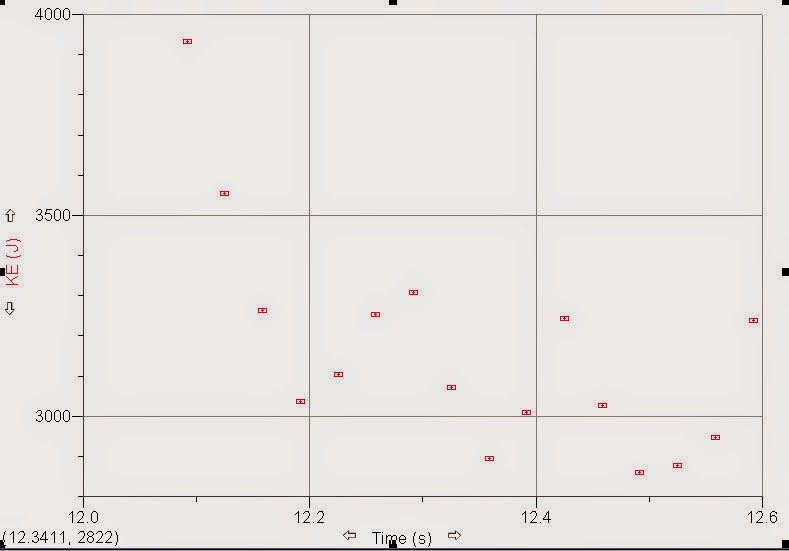Finding the moment of inertia of a uniform triangle about its center of mass
Annemarie Branks
Professor Wolf
Objective: Find the moment of inertia for a uniform, right triangle plate about its center of mass for the two orientations as shown below.
Procedure:
1. Before setting up the Pasco rotational sensor kit, we want to find the theoretical moment of inertia for the triangle about its center of mass. Use the parallel axis theorem to find its moment of inertia about its center of mass.
2. Considering that the center of mass for a triangle is a third of the way in from its edge (B/3, H/3), we can use the parallel axis theorem to find its moment of inertia about its center of mass. Below is that calculation.
Measure the dimensions of the triangle and its mass. Ours was 14.85 cm by 9.80 cm, and 456 g. With this equation, it is found that the moment of inertia for the triangle when the longer side is H turns out to be 0.000243 kg*m^2. When the triangle has the shorter side as its H, the inertia is 0.000559 kg*m^2.
3. Now, we want to see if our calculations are close to the Inertia we get when we use the Pasco system to find the angular acceleration. To get the inertia of the triangle alone without the system, we need to find the angular acceleration of the system without the triangle at all. Be sure to include the holder. So this system includes the holder (26 g), a large pulley (36.3 g; diameter 5.36 cm), two steel disks (1360 g; diameter 12.630 cm) where only the top disk spins, and a hanging mass (24.6 g).
4. Set the system to detect 200 marks per rotation and generate an angular velocity versus time graph. Find the slope of the hanging mass going up and the hanging mass going down. This is the graph we generated.
We will be using the same inertia equation from the angular acceleration lab to find the inertia. This is that equation.
"m" will be the hanging mass and "r" will be the radius of the pulley.
The inertia for this set up, without the triangle, came out to be 0.00293 kg*m^2.
5. Repeat this process, but include the triangle. We did this triangle with the long side pointing up. This is the graph we generated.
The inertia for this set up, with the triangle, came out to be 0.00317 kg*m^2. So to get the inertia of the triangle alone, subtract the inertia of the system without the triangle from the inertia of the system with the triangle. This gives a value of 0.00024 kg*m^2 which is close to our theoretical value of 0.000243 kg*m^2.
6. Repeat this process again but change the orientation of the triangle. This time the short side of the triangle is point upwards. This is the graph generated.
The inertia for this set up came out to be 0.00356 kg*m^2 which makes the inertia of the triangle alone with the short side pointing up, 0.000630 kg*m^2. This is not as close to its theoretical value of 0.000559 kg*m^2, as the last trial was.
Conclusion: The values we came up with from the experiment were close to the values we solved for using the parallel axis theorem. This experiment taught us how to use the parallel axis theorem and that it actually works. The slight differences in values could be due to some uncertainties/sources of error.
Sources of Error/Uncertainty:
- There could be human error when measuring the diameter of the pulley and the dimensions in of the triangle
- Scales are often faulty or inaccurate or can only measure up to a certain number of decimal places.
- The triangles may have not had their bottoms completely parallel to the ground.
- The Pasco system may not be as quick as we would like it to be when counting the markings on the side of the disks.









































